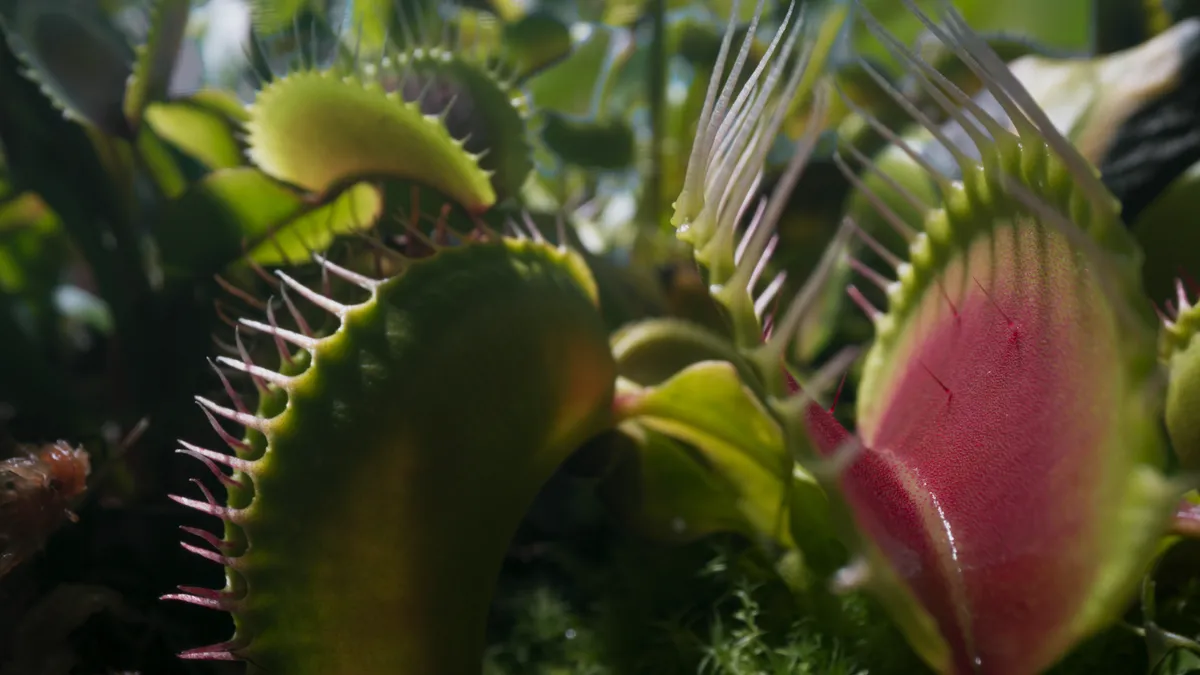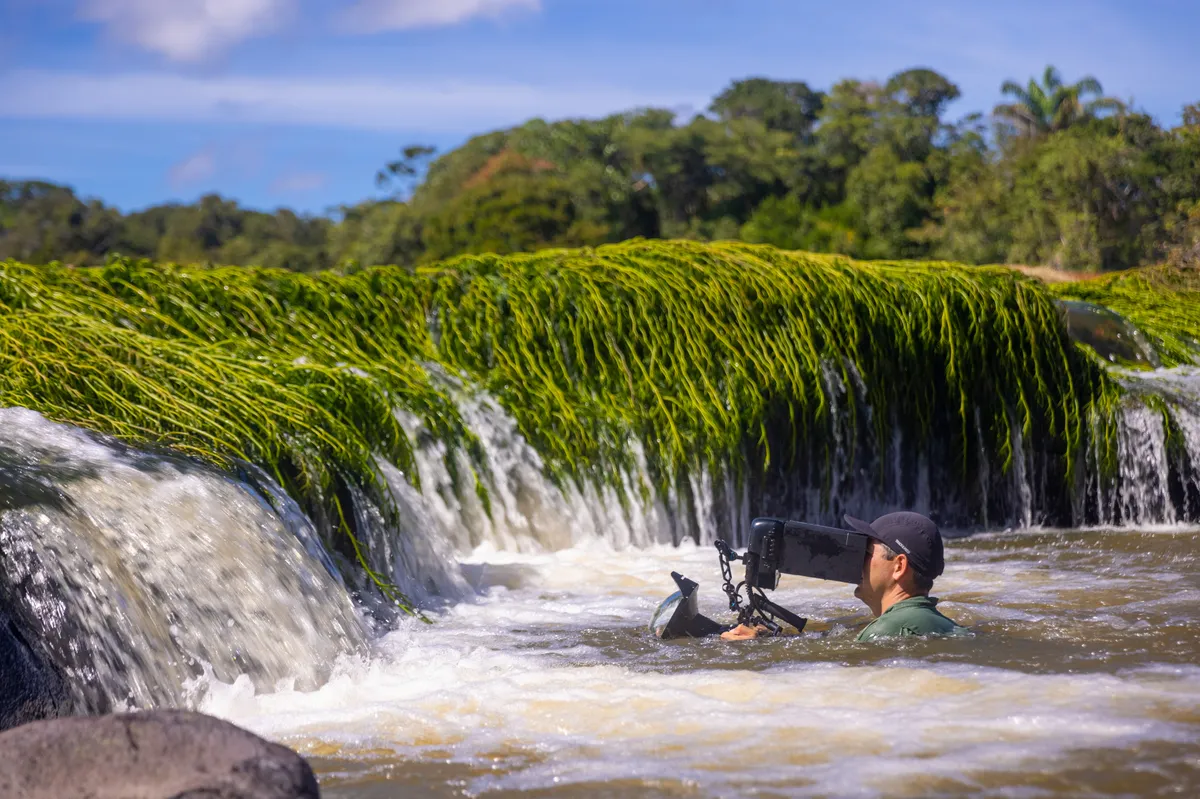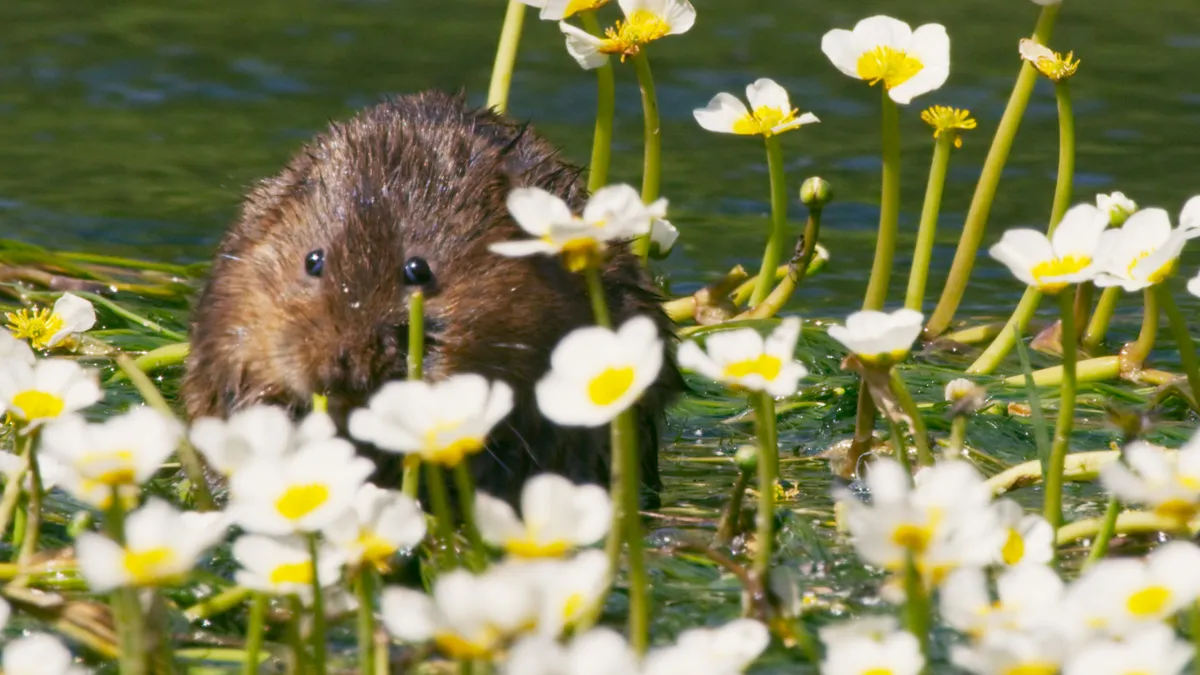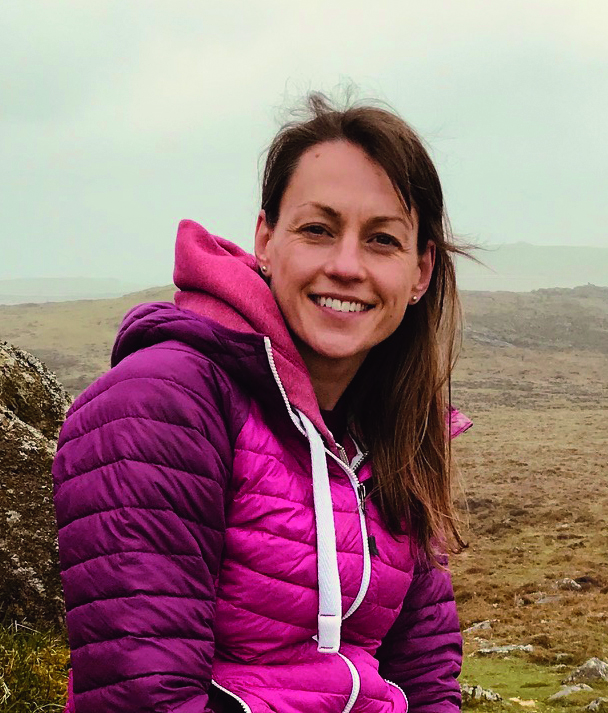Water Worlds – The Green Planet episode 2 – explores the evolution of plants in some of the Earth's diverse aquatic climates. Producer Peter Basset tells us how his team used new time-lapse technology, long lenses and drones to capture the drama of the plants' fight for survival.
What's the headline theme?
How plants survive in one of the most challenging locations on earth: under and in water. If you're on land, you're rooted to the spot and your environment doesn't change. If you live in, say, a mountain stream with a constant torrent of water cascading past, that's going to present a huge strain. So, we look at how plants feed and carve out niches in different watery worlds.
What particularly impressive plant 'behaviour' do you show?
Most of us are familiar with the Venus fly trap, but it's a far more sophisticated plant than we realise. People think you simply flick the trigger hairs and the plant will clamp shut. Not so. We take Sir David to Kew Gardens, where he demonstrates that if you flick the hairs once, nothing happens; flick them again 20 seconds later and the plant reacts. This is because Venus fly trap mechanisms use a lot of energy, and the plant must be aware of false alarms: one 'touch' might just be a droplet of water, but two in succession is more likely to be prey.

And there's more. The trap doesn't seal completely, so tiny creatures can escape – which is fine, as they're not worth eating. If bigger insects, which can't escape, trigger the hairs five more times, the plant starts the process of digestion. It's amazing – in a way, the plant is counting.
What rarely seen behaviour is there?
We all know that green plants photosynthesise – they take in CO2 and give out O2. There's a stream in Brazil where you can actually see this happening. The stream is fed by springs and is rich in CO2, making conditions perfect for photosynthesis. When the sun rises, the plants carpeting the sides and bed of the stream start the process, giving off curtains of bubbles that make the water fizz like champagne. It's not an iguana being chased by a racer snake, but it's magical and profound.
Any filming firsts?
Yes. Some of the plants in the 'fizzy' stream become so buoyant that they 'lift off', taking lumps of bedrock with them. It's like the film Up, where a house is carried away by balloons. Nobody has seen this before, and our cameraman caught it completely by chance.

What quirky new species do you introduce?
The marimo in Lake Akan, Japan – it's rarely been filmed. It's a primitive algae that forms when the lake freezes. When the ice melts, the algae break off in clumps and, over months or years, the movement of the water rolls them into spheres. They eventually settle on the lakebed at a depth of about six feet, alongside millions of other marimo. It looks like some sort of art installation – the cameraman described it as a 'sea of Tamagotchis'. Few people have heard of it, but the marimo is a national treasure in Japan. It is protected, so we had to ensure our camera gear didn't come into contact with them, and we had a scientist with us at all times.
Watch more documentaries by David Attenborough:
What's the most spectacular sequence?
The giant water lily in the Brazilian Pantanal – it's a huge plant that can grow to two metres across. It's a great character. There are one or two lagoons where they do 'battle' with other surface plants, such as water lettuce and water hyacinth. From its roots on the riverbed, the lily sends up an amazing slender leafhead that looks like a Nasa rocket. When at the surface it starts to swipe around, pushing other plants out of the way. Then the huge leaves unfurl, casting everything beneath into shadow. It reminds me of the scene from Independence Day, when the enormous spaceship glides overhead.
Please note that external videos may contain ads:
The Tyrant of the Deep | The Green Planet | BBC Earth
How did you film it?
The sequence – which starts with a single plant blooming and ends with a drone shot of the whole river being covered in giant water lilies – took over a year, and was filmed both on location in Brazil and in a studio. We used time-lapse expert Tim Shephard, who I like to call Mr Plant. He thinks like a plant and knows just how to keep them happy, with the right amount of nutrients and light levels. He created a mini Pantanal in his studio in Devon using plants from Kew Gardens, in the biggest tank he's ever made. It took him over a year.
We then installed a gantry around the tank, which allowed us to do a time lapse, following the lilies as they grew and crushed the other plants. Following the plants moving to their own timescale, their behaviour is much more animal-like. You can follow them in a way that really brings them to life.
How did you cope with the pandemic?
As we were doing a lot of studio work, we could carry on with that. We'd already filmed the marimo in Japan before lockdown, luckily. We then made the most of gaps in lockdown. Assistant producer Joe Russell managed to get to Formentera, near Ibiza, to film seagrass, for instance. This is a really important story as seagrass is out of sight, out of mind, yet it can trap carbon 35 times faster than a tropical rainforest, so is vital in the fight against climate change.
As lockdown eased we were also able to do several UK shoots. We filmed water crowfoot, part of the buttercup family, on a chalk stream near Salisbury, and it was one of the most spectacular things I've seen. We were using a Laowa probe lens, which gives more of a plant perspective. We then filmed the stream on a long lens, and suddenly had this frame-filling scene of flowers slowly drifting along. I'd never seen this plant in that way before.

Any close shaves?
We were checking out a river in Brazil when I spotted a caiman. The boatman said there'd be five or six more, and I didn't believe him. To prove me wrong, he started calling them by making a peculiar noise with his throat. Within a few minutes we were surrounded.
What's your most memorable moment?
Snorkelling in the fizzing stream in Brazil. it was like being in a magical dream, with the bubbling water backlit by the sun, surrounded by greenery that was also reflecting off the water surface. When you go to Antarctica, you see the world in a thousand shades of blue; here, it's a thousand shades of green.
Read our exclusive interview with episode three producer Rosie Thomas






